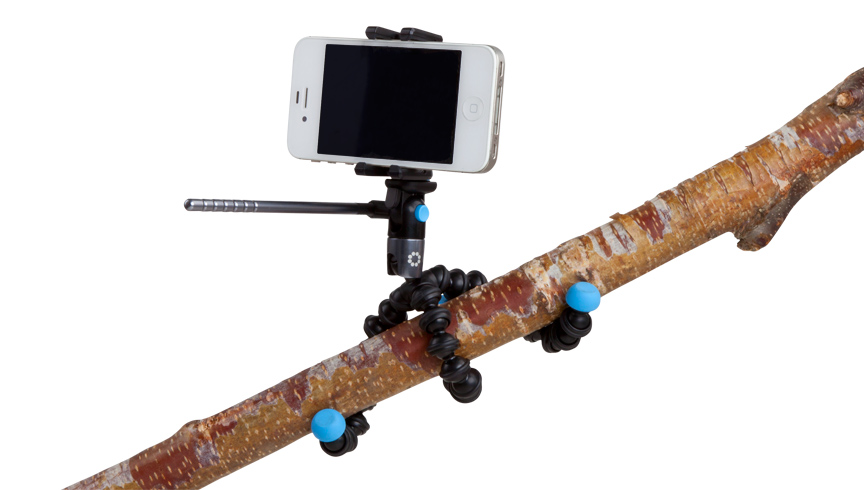Consistently creating excellent content takes a lot of effort and planning – probably more than you might think. When it comes to video, that is doubly true. Great videos can take a lot of work and time to put together. However, if you are diligent about capturing content and ideas, are not afraid of upcycling your existing material, get the right tools, and invest more energy in planning, you can make video content production a lot more sustainable, even with a small team. Read on for our tips and tricks for creating a productive video content ecosystem.
Capture Content and Ideas as They Happen
The best ideas sometimes come from unexpected places or at unexpected times. Ideas might coalesce while perusing a blog, jogging on the treadmill, reading the news, or talking to a friend. Take the five seconds you need to capture that brilliant thought with a handy app on your smartphone, like Evernote, Trello, or even just your phone’s built-in note or voice memo app. This simple step is key to helping you capture and track your ideas, so that when you have one of those days where you just. cannot. write. you have some inspiration to work with. Even if you do not have the time to read through the whole article and just saw an interesting headline, handy apps like Pocket let you keep the article for later, and download it locally to your phone so you can read it at anytime. Making this a habit will prevent you from spinning your wheels when you could be outlining your video script instead.

Know Your Existing Content
Your old videos are solid gold for more reasons than are instantly apparent. If you already have a few videos at hand, the source footage and edited clips might have additional ideas you could expound in a future video, or some great sound bites you could mix up with new footage. In either case, existing content can help speed up the creation process dramatically. So, if you ever film an interview, record a webinar, speak at a conference, film one of your events, or record yourself with your webcam, retain copies of everything and keep all of the video footage on your computer (where it will be super organized, right?). If possible, keep the editing project files too so you do not have to re-render or re-import footage; that can be the most time-consuming part of video editing. Occasionally revisit these videos and see if any parts might be relevant to new projects underway.
Get the Right Tools
It is a heck of a lot easier to create videos if you have the right gear, and especially if you do not have to set up your home studio every single time. Chargers and other small pieces of equipment have a way of growing legs and disappearing, so actively try to make it easier for yourself whether you have a dedicated studio space or not. Purchase a tripod, get a decent HD camera if your phone or webcam will not cut it, and pay special attention to your audio. Set up a small quiet space in a conference room, office, or corner of your house where your equipment will not be in the way. Here is a great example of a home studio that cost less than $200 (excluding the camera). Ideally, whenever inspiration strikes you, you can just power everything on and press record.
The one piece of equipment you need, no matter what you are filming with, is a tripod. These little numbers by Joby will make your video less shaky and lot easier to produce quickly. The feet are magnetic and the legs are flexible so they can literally go almost anywhere, and they work with both iPhones and Androids.

Planning Your Content
If you spend more time thinking about where your video content will come from, when you expect to publish it, and where, you will thank yourself a thousand times over later.
The worst time to think about capturing video, for instance, is when the event is already underway. Nothing kills the spontaneity of a moment like scrambling for a videocamera or asking for another take. If you are throwing a conference, for instance, and have not thought about filming it, you are probably doing it wrong. Especially for larger events, you need to plan ahead to make sure you have the right equipment and staff in the right place at the right time in order to wind up with the footage you need afterwards.
Another approach is to think about when you want to publish a video, and work backwards from there. Say you decide to start publishing a new video to your blog every Friday. Look at your meetings and activities leading up to that date, and consider whether any are worth filming for your video. Even a casual conversation with a business partner over coffee could become either stock footage or a voiceover for your video. The absolutely worst time to think about whether you have all the shots you need is the day before you want to publish your video.
If you know where this video is going to go, it will be a lot easier to make sure you have your bases covered in terms of footage prior to sitting down to edit the film. If you want to upload it to a video hosting platform like SproutVideo, for example, and publish it on your website, you have a lot more options than if you plan to publish it somewhere like Instagram or Vine. These short form video platforms will require that the video is A. on your phone and B. extremely short. Think through the process from beginning to end and you will make better choices about how you are filming and formatting your video.
Taking those three basic factors into account, if you want to map out a video content schedule, you can plan certain meetings, interviews, or trips around the order in which you will need those specific shots for your videos, or vice versa. For instance, if you plan to publish an explainer video for a product, you could make a how-to video featuring the same product right after. Or, if you are showing a house for sale and have to stage it anyway, it would make a lot of sense to film a walk-through at the same time. Seems like common sense, but all too often we miss these types of shortcuts that save us time and effort.
Do you currently use any of these tips and tricks for simplifying your video content production process? What would you add to our list? Please post them in the comments below, or on Facebook and Twitter!








